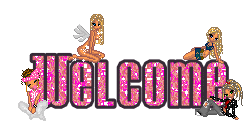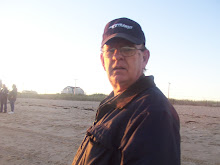
Charged up about Reiki
By MATTHEW SOLAN
Reiki is a 4,000-year-old Japanese healing modality that works to balance the chakras, or energy centers, located in specific areas of the body. A Reiki therapist channels the universal energy around us to where it's needed by placing his or her hands on and around your various chakras. "Reiki is a powerful and precise system of healing," says Sonia Morissette, Reiki master and owner of Sarasota Healing (www.sarasotahealing.com). "It accesses universal life force energy, which helps promote healing in all living things at physical, mental, emotional, and spiritual levels."
A chakra is a vortex of energy. There are seven: root, sacral, solar plexus, heart, throat, third eye and crown. (See chart on page 36.) Described as being about the size of your hand and resembling a spinning wheel, chakras spin at different speeds, fast or slow, and vibrate at various frequencies. The first spins the slowest and the seventh the fastest. When a chakra is "blocked," it spins too slowly or quickly, or even in the wrong direction. When this occurs, physical and emotional problems can manifest, such as depression, anxiety, fatigue, chronic pain and insomnia. Reiki gets the chakras to work smoothly again. "Optimal health is having strong, clear charkas that spin smoothly," says Ellen Schulman, a certified registered Karuna Reiki master and registered professional nurse in St. Petersburg.
Before your initial Reiki session, it's common to have a sit-down assessment with the therapist to discuss your problems, either physical or emotional. This helps the therapist pinpoint which chakras may need the most attention, explains Shulman. But since I didn't come with any set issues, my session was about getting a chakra checkup. After your chat, you go through a version of airport security: shoes off, remove all metal like keys, belts, watches and rings. "The reason is that metal can interfere with the movement of energy during a treatment," says Schulman. She says I may feel several sensations during the session, view vibrant colors, feel my arm or legs suddenly "levitate" or even fall asleep.
You lie fully clothed on a padded table with your head and knees supported by pillows and your arms comfortably at your side. The therapist places his or her hands around or on your chakras, staying as long as necessary to restore energy balances. Schulman first places her hands around my eyes and face. The pressure is feather-light and then gradually increases at the speed of a glass being filled by a steady trickle. Her touch is warm and at times radiant. She then leisurely moves through the rest of the charkas: around my throat, over my heart and on my stomach. There are moments when she doesn't touch me at all and her hands are busy waving about, moving energy around. Other times, she wipes her hands down my arms, hands and fingers, like she is trying to brush off lint on a suit, and then dusts her hands clean. "This sweeps any negative energies from the client and it is sent back to the earth," says Schulman. You may not "feel" anything happen during a session, but there was a moment when I was so still, relaxed, at ease, that I couldn't feel myself lying on the table -- not levitating, but a clear sense my body was absorbing something. Another time, when she placed her hands on my knee and hip to work my root chakra, I felt a sudden rush of heat.
Afterward, Schulman said she sensed a deep imbalance and wondered if I had any knee issues. No pain, I told her, but I did recently take up running again and had been hitting the treadmill at a feverish pace, perhaps a red flag that I might be overdoing it. That's one unique side of Reiki, says Schulman. It can often locate potential problems before they get worse. "An energy imbalance is a sign something is wrong, even if you don't feel it or are even aware of it," she says. "It's not designed to cure, although some people swear it has eliminated their tumors," says Morissette. Instead, it can initiate the healing process by targeting energy to problem spots or simply restoring energy so the body can heal. For example, if your insomnia is because of anxiety and stress from communication issues at work, that would be related to a weak throat chakra. If an ulcer or stomach problem causes your sleeplessness, then the imbalance would be in the solar plexus chakra.
Reiki does have a strong overall calming effect, adds Morissette, which can support traditional medical care by enhancing your overall well-being. It's difficult to measure Reiki's effects on the body, but some hospitals and hospice programs do use Reiki to reduce stress prior to surgery, soothe treatment side effects, such as chemotherapy fatigue, and accelerate healing. After my hour-long session, Schulman said she sensed a significant imbalance in my root chakra, an indication of not being fully grounded. She suggested getting out with nature or changing my daily routine. I didn't necessarily feel "ungrounded," but it is true that I'm a creature of habit who sticks to an office desk, with little variation, for days or weeks at a time. I took her advice and headed to a nearby beach. I listened to the wind and watched the different lines of colors as they stretched out into the Gulf. It was a shock to my normal routine. I only stayed 20 minutes, but I did feel more grounded, like I had experienced a deep meditation. I don't know for certain if Reiki did anything for me, but it did make me pause and examine how I was living. And that's something not many therapies can do.
Matthew Solan writes about alternative health.
This is the original source of the article:
http://www.heraldtribune.com/article/20071212/NEWS/712120690/-1/newssitemap
Sunflower Art, Crafts and Snacks! a dozen ideas
10 years ago






No comments:
Post a Comment